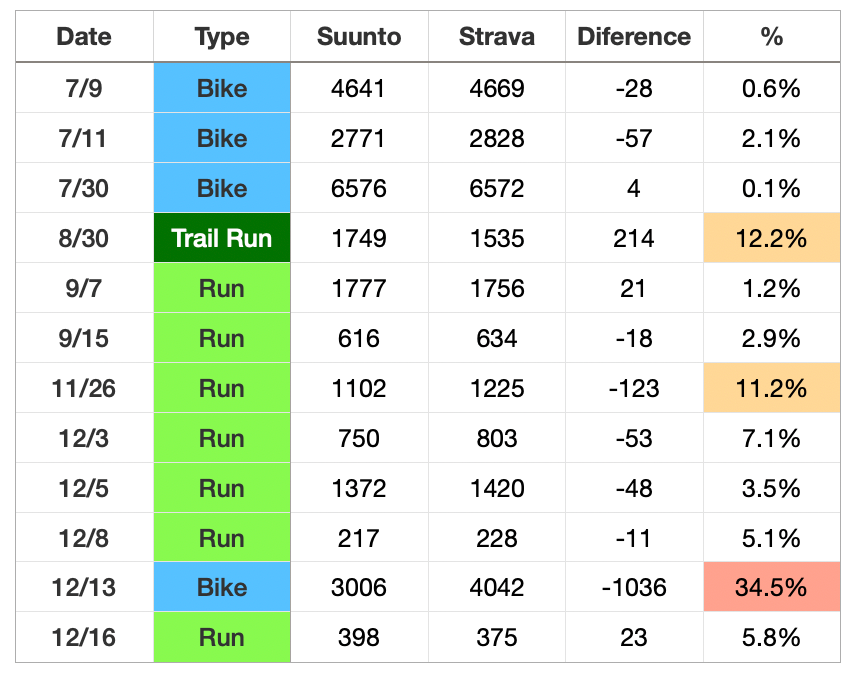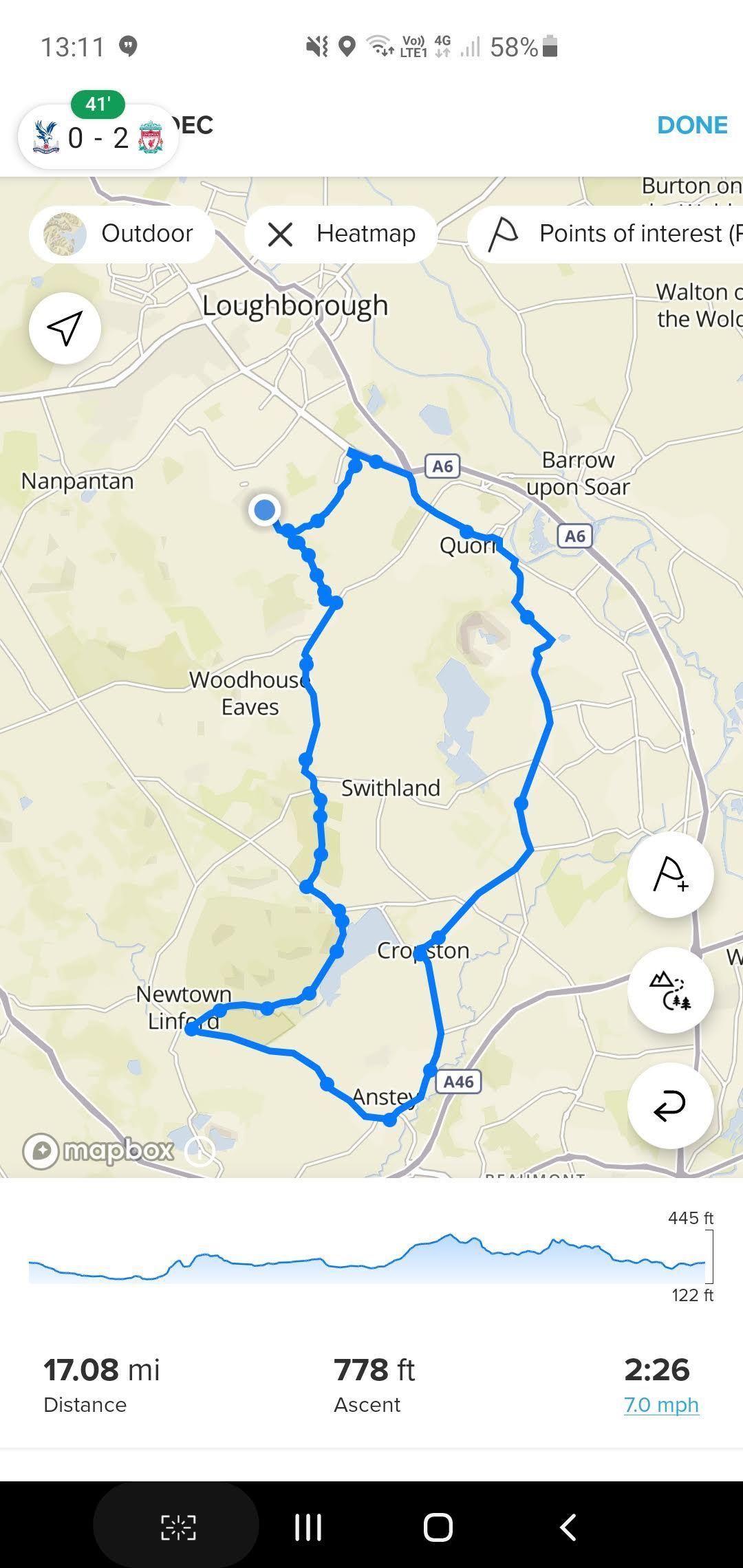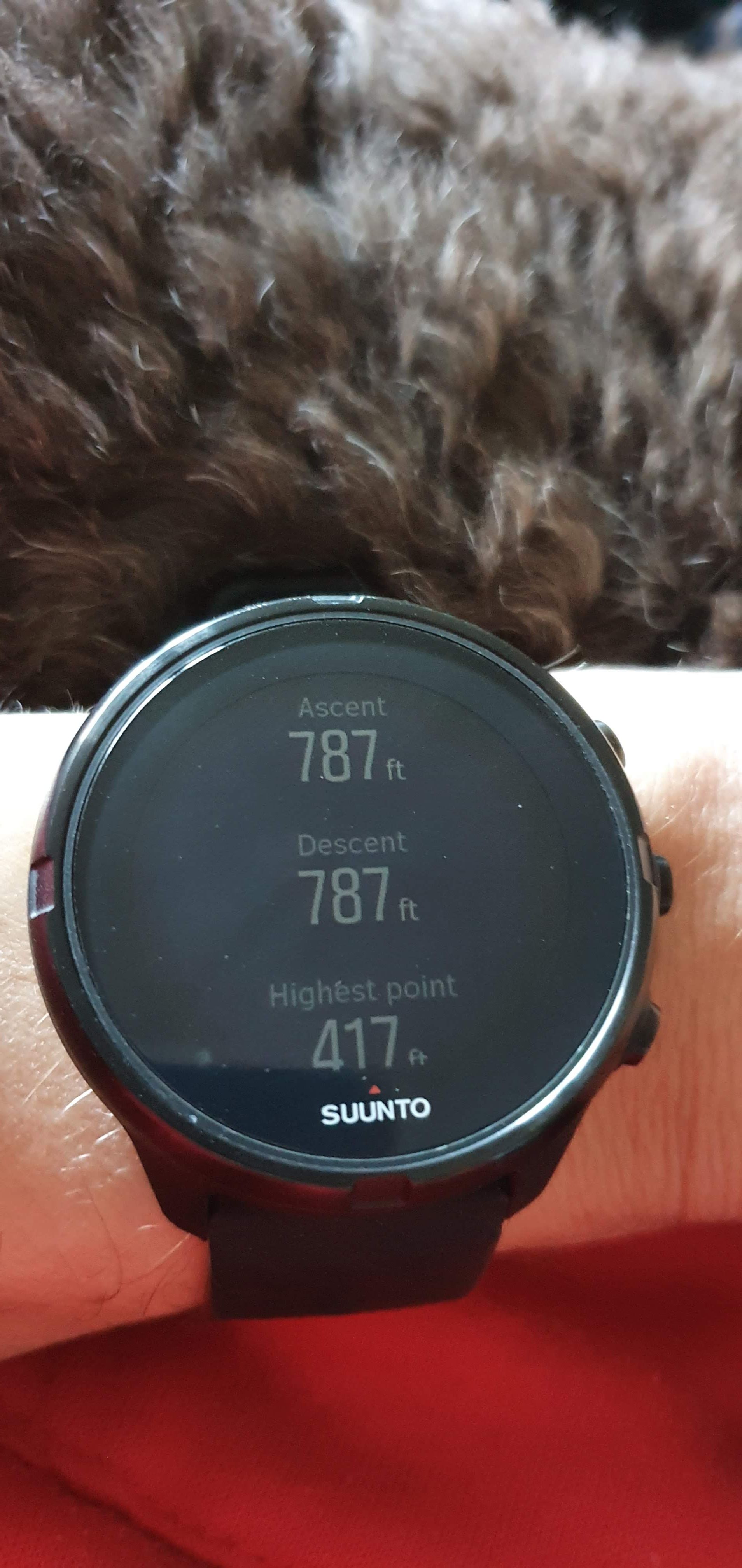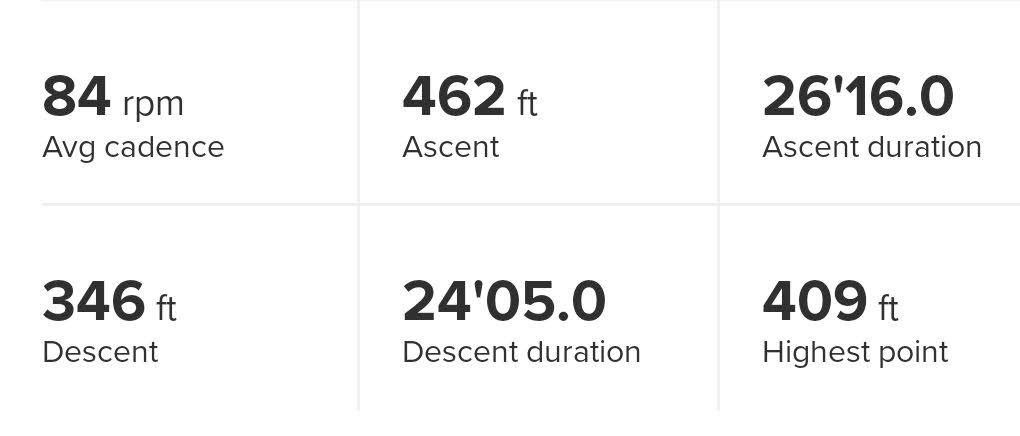Suunto 9 baro very low elevation gain vs other brands
-
I went back and looked at some recent workouts where I wore thee 9 and actually found tight agreement for most.

-
Guys, another problem is if you have a free account Strava makes adjustments, the paid account seems to just take the data.
-
I know that I am looking at the S9, not the Baro, but for me this is the way that the S9 calculates the ascent.
Today I created a route in Suunto App with 778 ft elevation,
 .
.
Watch confirms this route profile:
After run complete, shows

Strava shows the same, but I will use corrected data
So its missed off 300 ft of climb.
In Strava I always have to hit the Use Corrected Data. linkyMy old 310XT never gave me the option to corrected data as it seemed to give the right amount. I manually added the main climbs and I get to at least 600+, not counting the undulations.
Another run linky watch shows 1017 ft, but Suunto App shows 1788ft, Strava corrected shows 1866 ft.
As I say, its those undulations that seem to be missing.
I am confident that the watch knows the correct height as I have been on top of a local hill that is 780 ft, and the watch tells me the elevation is 770 ft or so, so I am happy with that part.BTW Liverpool are now 4-0 up…
-
@andrewglipman suunto app counts 1m of ascent. Actually even less. This is not aligned with how the watch does it. And the same applies to all other route planners. It’s just how messy this situation is.
So again there is a minimum of 3m climb needed to register ascent. That’s how it is and that’s how it reports accurate ascent for baro models.
-
The route had quite a lot of undulations that are certainly not enough to trigger adding it to the ascent.
I will continue using the corrected data.
Had the S9 for just over 1 year and still love it. -
It was great if the user could set a flag in the settings, if he prefers the watch to take each 1 meter change into calculation or not.
BTW, @Dimitrios-Kanellopoulos I posted the activity a few messages up.
-
@andrewglipman said in Suunto 9 baro very low elevation gain vs other brands:
not enough to trigger adding it to the ascent.
This is exacly the problem. Why not take all changes and be accurate…I cant understand that and this make me feel dissapointed.
-
@sky-runner said in Suunto 9 baro very low elevation gain vs other brands:
One easy way to verify that is just to look at elevation profile and manually add up all climbs and compare to the total ascent reported by the watch.
Also using Runalyze you can play with different thresholds and check.
-
@Oktan load your activity on runalyze. Do you know the service ? There you can see all the elevation reported by services and different methods of calculating ascent.
@fazel also linked you the post with the details.
It’s a common thing for people to ask this question and it does take a lot of debate each time iterating over the same points.
In a kind way this is how ascent is calculated. The 1meter threshold will register ascent just by your arm swing. The 2 meter threshold will do the same on each little bump or wind or rain etc.
While I do understand the debate this number of 3 meters is selected not in random but by continus data parsing and validations. We want to have the most consistent real ascent and that’s the decision made. We cannot sacrifice puting 1m ascent and getting people complaining of getting 200+ meters ascents in amsterdam.
There is nothing bad with your watch or Strava or the data. It’s all there ok.
To be honest here as as an ex mountain goat. If you think you can say you did 200m ascent each run on flatish, and thus about 2k per month, you are just not saying the truth to you. As an athlete you are mischievous to you. And that is important. That’s a personal opinion when my Garmin friends from Amsterdam would come with 2k ascent per month to visit, and stop at the first 100m trail going up splitting their lungs out. Opinion , no, 10x1m in 10k up is not 100m ascent to your legs.
-
@Dimitrios-Kanellopoulos said in Suunto 9 baro very low elevation gain vs other brands:
stop at the first 100m trail going up splitting their lungs out. Opinion , no, 10x1m in 10k up is not 100m ascent to your legs.
Oh Damn you Force of Gravity and Steep Slopes !!!

-
@Dimitrios-Kanellopoulos - interesting point about the arm swing. This is helpful as it helps me understand the decision process.
@Oktan here’s the link: https://forum.suunto.com/topic/5169/s9-barometer-problems/66?_=1608338498813
-
@markytarky said in Suunto 9 baro very low elevation gain vs other brands:
Guys, another problem is if you have a free account Strava makes adjustments, the paid account seems to just take the data.
That is completely untrue. Whether Strava makes adjustments or not depends only on two factors:
-
Format of uploaded data. If the data is in FIT format the data comes from the header - basically what has been reported by the watch. If the data was in GPX format there is no header, and Strava gets all the data by analyzing the track.
-
If the data comes from a device with barometric altimeter, Strava trusts altitude and total ascent / descent. Otherwise it ignores the elevation data and applies elevation correction algorithm that gets the data from its own database.
-
-
@Dimitrios-Kanellopoulos I watched my Garmin many times in real time trying to understand how it calculates total ascent. It looks like Garmin also uses 3 meter threshold, similar to Suunto. However Garmin still counts total ascent more accurately. The difference is that it uses the 3 meter threshold only initially when there is a change in vertical direction. After that the threshold seems to be smaller because I see the ascent changing in 3-5 ft increments (1-1.5 meter). Also Garmin always captures the last bit of ascent when running over top of the hill. It seems it analyzes the trend and understands that I started running downhill because it often adds the last few feet of ascent after I have already started running down.
In contrast, Suunto 9 seems to be doing some sort of averaging of altitude over 5-10 seconds in addition to the threshold, which results in additional smoothing of extremes (the lowest and the highest points). With Suunto, I noticed that I had to stop and wait at a highest point for a bit for the last 10-15 feet (3-5 meters) to be captured, and if I ran without stopping it would often miss that last bit of ascent even if I was above the threshold.
I agree that for most people it isn’t a big deal, and the whole issue is much less noticeable when moving slower, for example hiking. But I noticed it regularly enough to be bothered by it.
-
silentvoyager was heavily involved in this type of discussions and we already have plenty of these in this forum.
When I roughly compare my Fenix3 activities with my S9B activities I get the impression that Garmin exaggerates the total ascent.
I trust my S9B more than any other watch I’ve previously owned. -
@TELE-HO I am silentvoyager. At least I was before I deleted my previous account. Anyway, I better stop here.
-
@sky-runner
 welcome back, bro!
welcome back, bro! -
- No, I dont know the service, but I will try to look into it.
- The watch is on the bike handlebar and not on my hand.
-
@sky-runner I understand that but there is no averaging. It’s just a time window of 3 seconds to filter out noise. Also if you use the climb suunto plus this is bypassed so it counts your rolling hills workout.
-
@sky-runner said in Suunto 9 baro very low elevation gain vs other brands:
@TELE-HO I am silentvoyager. At least I was before I deleted my previous account. Anyway, I better stop here.
I think you can keep pushing on this and I agree that perhaps a better method to filter noise could work. Even though this rarely affects me because my climbs are larger it would bug me a lot. I have been asking if we could get improvements in the altitude profile graph for routes. Perhaps improvements in altitude filtering could come too. So, please don’t give up and don’t silence yourself. No watch is perfect!
-
@sky-runner said in Suunto 9 baro very low elevation gain vs other brands:
@TELE-HO I am silentvoyager. At least I was before I deleted my previous account. Anyway, I better stop here.
Welcome back!!! About the ascend debate, as @Brad_Olwin says there is always room for improvement.